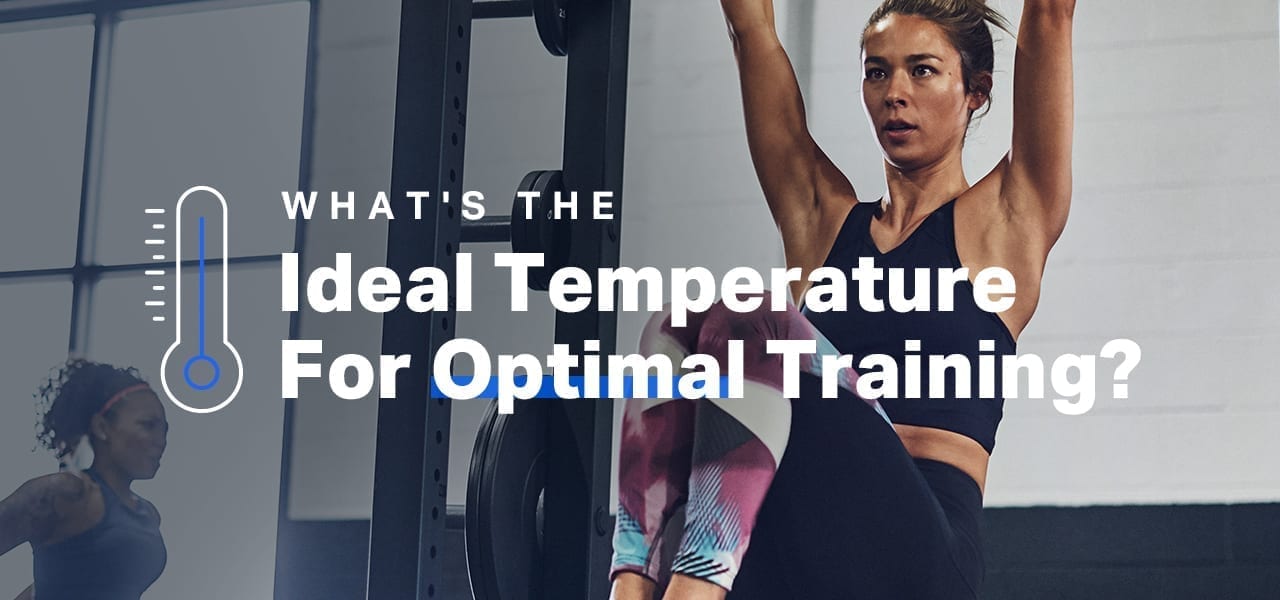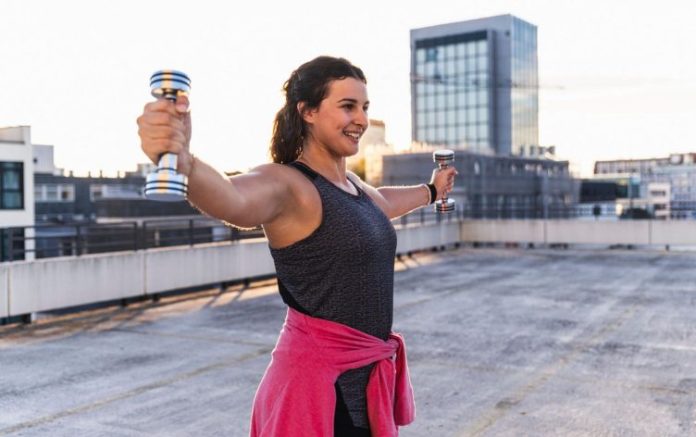
Hot yoga and sweaty workouts have been popular for years, but now cold workouts are starting to make an appearance, too. At least one New York gym, Brrrn, is devoting itself to the benefits of working out in frigid conditions (50ºF/10ºC) and the trend is starting to catch on. So it begs the question: Does it make sense for you to train in the cold or the heat?
Athletes have long argued hot workouts lead to increased performance, endurance and a higher blood flow and sweat rate. Plus, your muscles are pliable and warm. But the cold training advocates say you work harder in cold temperatures and burn more calories.
Which one is right? What’s the best temperature for different workouts?
There are two ways to consider temperature, says Christopher Minson, a professor of human physiology at the University of Oregon and an expert on temperature adaptations in athletes:
One, how elite athletes use cold and heat in training, and two, how hot and cold create physiological changes in regular people doing regular things — i e., when you’re not working out.
WHAT HAPPENS TO YOUR BODY IN THE HEAT?
Heat can be used to force some of the same health effects as exercise, says Minson. Periods of heat stress, like time in saunas or hot tubs with temperatures ranging from 100–180ºF, he says, leads to an increase in heart rate and in blood flow to the skin. Your body then adapts to the blood flow, proteins are released and there’s a decrease in inflammation response and oxidation stress.
“Heat stress is very much like exercise,” he says, in terms of the long-term cardiovascular changes. For example, he says, some studies have shown people who spend more time in saunas over years have better health outcomes: fewer heart attacks, greater longevity and decreased risk of hypertension and Alzheimer’s.
However, if you have to choose between exercising or just sitting in the sauna, pick exercise, says Minson.
The challenge with exercising in the heat at temperatures around 90–100ºF, however, is you get more dehydrated, so it’s harder to work as hard as you would otherwise. That’s why elite athletes do shorter periods of heat acclimation — either doing some of their easy workouts in the heat until they adapt, sitting in hot tubs or saunas after harder workouts at regular temperatures or simply slowly adjusting to the weather. It takes about 7–14 days for the effort level, heart rate and core temperature to adapt to a hotter environment.
There’s some evidence that after periods of heat acclimation athletes actually perform better even at regular or colder temperatures. There are increases in plasma volume and sweat rate, which helps lead to increases in endurance, VO2 max and lactate threshold.
But if you overheat and your core temperature becomes too high, you can experience cognitive dysfunction, which may lead to heat stroke and organ failure. A person’s core temperature hovers right around 98.6ºF (37ºC) and if that goes slightly up or down, the body starts to shut down. In terms of heat, by the time your core temperature hits 102–104ºF (38.8–40ºC), you’ll start to be disoriented. By the time it hits 107ºF (41.6ºC), your body will shut down.
WHAT HAPPENS TO YOUR BODY IN THE COLD?
What happens to your body in the cold is similar to what happens in the heat, says Minson. There is less oxidation and inflammation, some of the same proteins are triggered, and cell damage can be repaired. But the effect on your workouts is slightly opposite — i.e., you’re likely able to work and train harder in the cold. This happens even at moderately cold temperatures of just 45–60ºF, because all that’s necessary is to keep the core body temperature from rising too much, allowing you to work harder.
There has been some research done on the health effects of bouts of cold stress — like ice baths or cryotherapy — but that research is less clear than the research on heat stress. Cold stress triggers what is known as a beige-ing or browning of normal fat cells, says Minson, making them more metabolically active. There is also some evidence that people who spend lots of time in colder temperatures burn more calories. One argument suggests the obesity epidemic is related to warmer temperatures overall, but it’s not clear if just taking an ice bath or working out in the cold has the same general effect on your metabolism.
The downside for training in extremely cold temperatures is it generates muscle tightness, so you need to warm up well. If your core temperature drops even just a couple of degrees, your body has less ability to adapt and adjust than with the heat. You’ll start shivering and the blood will go to your core, then you’ll begin to move slower and struggle.
Additionally, we know there are some downsides to decreasing inflammation after every workout. Ice baths, says Minson, reduce muscle soreness and inflammation, but an inflammatory response actually has some long-term benefits, too. Yes, you’ll feel less sore after an ice bath, but the inflammatory response also triggers adaptation and protein synthesis — so getting rid of that after every hard workout makes you less strong in the long run.
IS COLD OR HOT BETTER?
“It’s hard to say what’s better,” says Minson.
On the one hand, there are a number of benefits to heat acclimation and hot workouts, but you can easily become too dehydrated or struggle in the heat. If you’re particularly susceptible to overheating, then you might also truly hate hot yoga or hot runs.
For people who dislike the feel of sweating and heat, then a colder workout might get them working out more often and exercising harder, which results in a larger aerobic benefit. You may also see some increases in calories burned, but it requires you to work hard to maintain a core temperature.
The ideal temperature also varies from workout to workout.

Most research on the ideal temperature for working out has been done on running, which can be extrapolated to a number of other activities. However, there are also sport-specific considerations for swimming, biking or gym workouts.
RUNNING
The ideal temperature for running has been studied extensively across many races. Most research suggests the ideal temperature for a long-distance runner is cooler than what feels comfortable just standing around — and for every degree warmer, performance drops significantly.
One study found 43.2ºF (6.2ºC) produced the fastest times overall — with the fastest runners benefiting from slightly colder and the midpack runners optimizing their performance a few degrees warmer. Another study of multiple marathons found slower non-elite runners — 3:30–5:00 marathoners — perform best around 44ºF (6.6ºC). A separate, decades-long study of the Boston Marathon found the ideal temperature range for all athletes (not just the pros) is 46–59ºF (7.7–15ºC).
If you’re not running a marathon, though, you don’t necessarily want to be that cold. In fact, sprint performance is ideal at significantly warmer conditions because you want your muscles to be warm and power to be at peak, but not so warm as to create higher core temperatures.
SWIMMING
For Olympic competition, pool temperature is mandated to be between 77–82ºF (25–27.7ºC). Water that’s warmer than that can lead to overheating and dehydration (even if you don’t feel like you’re sweating because you’re in the water).
However, that temperature assumes a vigorous workout. Your core temperature is significantly higher than 82ºF (27.7ºC), though, and you can lose heat through the water. So if you don’t keep swimming to keep your core temperature up, you could certainly get too cold in the water and start shivering. Because your skin temperature is 92ºF (33.3ºC) and temperature receptors are in your skin, it’s also likely the water will feel cold when you jump in.
If you’re going to swim in extremely cold temperatures — like cold water plunges in 50–60ºF (10–15.5ºC) — then you might experience cold shock and have difficulty breathing. That can be followed by a loss of dexterity and the use of your hands and legs. After 20–30 minutes, it’s also possible to experience hypothermia.
BIKING
In many ways, biking is similar to running in terms of cardiovascular output and core temperatures. Studies suggest there are decreases in time to fatigue and average power output at temperatures above 86ºF (30ºC) when compared to temperatures below 70ºF (21.1ºC).
Those temperatures are slightly higher than with running because you also have to factor in the wind chill. When cycling, you’re moving at a faster speed than running, which causes more cooling effect from the wind. That’s also why cyclists have to dress carefully. If you get wet or start sweating and then slow down, you could get significantly colder.
Some cyclists also find it harder to bike in extremely cold temperatures. Air density is greater at lower temperatures and the resistance or drag at 25ºF (-3.8ºC) is about 10% greater than at 75ºF (23.8ºC).
THE GYM
If you’re hitting the gym and indoor classes, then The American College of Sports Medicine recommends a temperature of 68–72ºF (20–22.2ºC) for indoor cycling studios.










